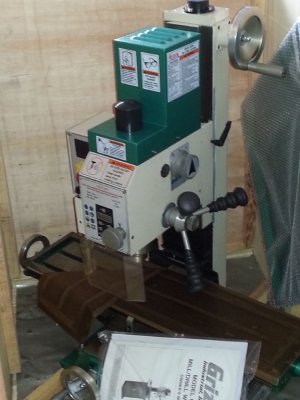After lurking here and on other forums for some time I ordered and received my g0704 mill. Since this is my first mill and first time machining I want to say thanks for the wealth of info and friendly help found here.
I broke it down for a thorough cleaning and I'm in the process of tramming it and have some questions.
I see that Mobil Vactra #2 and #3 are recommended for the horiz and vert ways. What type of grease is recommended for the screws? I currently have some white lithium grease on them after stripping off the shipping grease that came on them.
After getting some experience with it I plan on converting it to CNC. I have a set of 2 and 4 flute imported end mills I have been practicing with but what is recommended as far as better quality versions. I will mostly be cutting aluminum and believe that USA made HSS are well regarded for that. What brand or source should I look at?
For finishing passes on aluminum, especially on larger flats, are fly cutters or face mills preferred over end mills? If so what types and brands?
Thanks again.
I broke it down for a thorough cleaning and I'm in the process of tramming it and have some questions.
I see that Mobil Vactra #2 and #3 are recommended for the horiz and vert ways. What type of grease is recommended for the screws? I currently have some white lithium grease on them after stripping off the shipping grease that came on them.
After getting some experience with it I plan on converting it to CNC. I have a set of 2 and 4 flute imported end mills I have been practicing with but what is recommended as far as better quality versions. I will mostly be cutting aluminum and believe that USA made HSS are well regarded for that. What brand or source should I look at?
For finishing passes on aluminum, especially on larger flats, are fly cutters or face mills preferred over end mills? If so what types and brands?
Thanks again.



